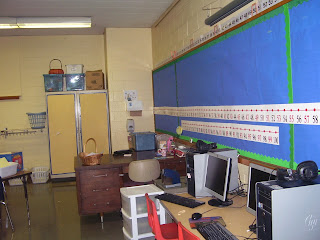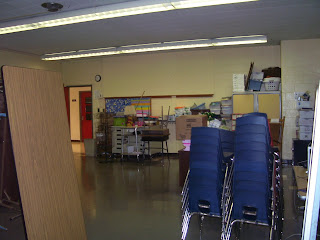With it being summer break, I've been enjoying some time not thinking about school so much, and just took a short but enjoyable vacation to New York City. Being a teacher, however, I couldn't help but make some certain observations while visiting some of the museums.
I went to a few museums while in NY, and at two of them (Ellis Island, and the MoMA) I was there during peak visiting hours, when a lot of parents were visiting with their children. I noticed two trends among these children: those that were interested and engaged in the exhibits, and those who showed no desire to be there, and were running around screaming.
With the latter of the two trends, I do not blame the kids for their behavior. I also hesitate to blame the parents. But what I do believe is happening in this situation is the parents mean well by trying to expose their children to art/culture/history, but what they have failed to do is adequately prepare their children for the visit. In addition they seem to be clueless as to how to keep their kids engaged in the exhibits at the museum.
Merely forcing your kids to go to a museum with you is not enough to keep them interested, and you would have been better off trying to find a sitter or daycare to take them to while you explore the museum on your own. Otherwise, not only will your kids not enjoy the visit, but you won't either--you'll be too busy trying to control them! But taking kids to a museum does not have to be a recipe for disaster. In fact, it can be done very successfully. You just have to go about it the right way.
Every time I take my students on a field trip, we spend several days (and sometimes weeks) ahead of time preparing for it. Any good field trip will, of course, supplement the curriculum. So by preparing your students for a field trip, you are not taking away from any instructional time at all--you are actually enhancing it. For example, before I took my class to the art museum, we spent some time looking at the art museum's website and discussing some of the art we would be seeing. When we took our field trip, the tour guide was very impressed with the fact that many of my students were able to recognize some of the art we looked at, and explain what was important about it. The students were far more interested and engaged in looking at the art because they became excited when they got to make connections to what we had done in class. They like to show off!
Another example is our field trip to see The Nutcracker. Before we go to The Nutcracker, I always read my students the story. We listen to some of the music and try to predict what part of the story relates to different pieces of music. We talk about how the story will be told without words, and how movement, music, and the costumes can be used to tell a story. I always tell the students, too, that after the field trip we will be comparing the book that we read with the ballet version, which ensures that they will pay attention during the show! We talk about proper manners in the theater, and we let the students get dressed up in their nicest clothes. We have always received compliments about the behavior of our students every year we go. By the way, the students at my school are low-income to lower-middle-class, and include a large ESL population, so this works for any child, not just the ones from "rich" or "privileged" families.
Parents can do the same with their children in taking them to museums. I noticed one mother at Ellis Island had picked up some activity pages for her children. It was like they were on a scavenger hunt and had to find the answers to different questions. She didn't just send her kids off to do it on their own, though. She worked with them on it and talked to them about the exhibits, helping them find the answers. Her kids were very well behaved and seemed interested in what they were looking at.
At the MoMA, I saw a father taking his son around, and talking to him about each painting. For example, when they were in the Jackson Pollock room, the father explained to the little boy how Jackson Pollock created his artwork. The boy was really excited about this, and really enthusiastic about all of the paintings. He was also really well behaved, and he was probably about 5 years old.
Also at the MoMA, I saw two girls who were a little older (about 10 years old) looking at different photographs together. They didn't have an adult right next to them, but they were well behaved. Their parents had given them one of the audio tour sets, and they were enjoying looking for pictures that had a number next to it, so they could put the number in the audio tour and listen about it.
I like to think that these parents also talked to their kids about the museum visits before the trip, as well as after the trip. If you're not sure how to do that, it's easy these days to find websites for the museums, and most of them have a page just for kids. You can also go to the library and find picture books that are related to what you will be seeing. Any time you can spend both before and after your visit talking about what you saw will not only help your child have a better experience, but you will also enjoy your experience more. You will find that you can do more than just visit amusement parks when you go on vacation, and your kids will walk away from the experience with so much more!





















